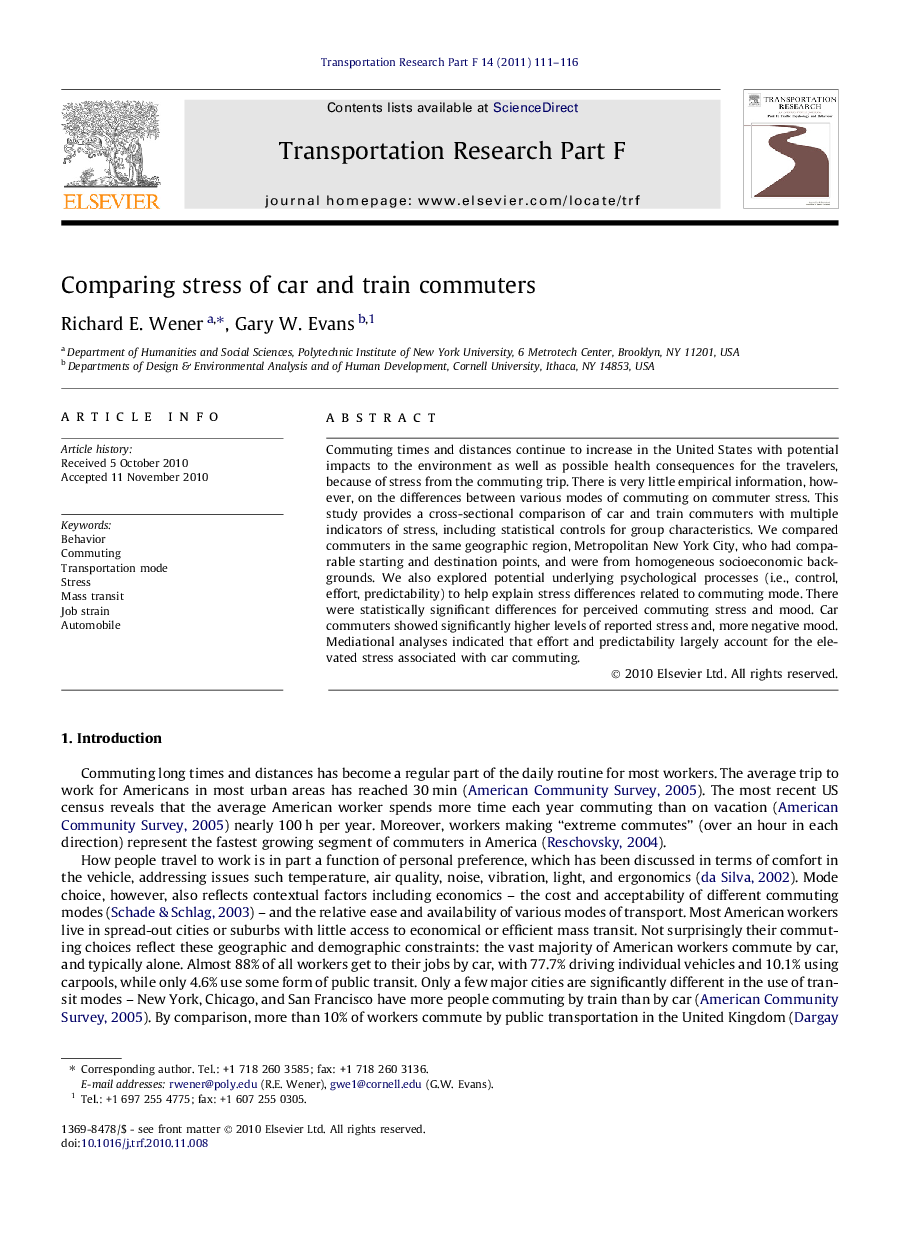| کد مقاله | کد نشریه | سال انتشار | مقاله انگلیسی | نسخه تمام متن |
|---|---|---|---|---|
| 897917 | 915208 | 2011 | 6 صفحه PDF | دانلود رایگان |

Commuting times and distances continue to increase in the United States with potential impacts to the environment as well as possible health consequences for the travelers, because of stress from the commuting trip. There is very little empirical information, however, on the differences between various modes of commuting on commuter stress. This study provides a cross-sectional comparison of car and train commuters with multiple indicators of stress, including statistical controls for group characteristics. We compared commuters in the same geographic region, Metropolitan New York City, who had comparable starting and destination points, and were from homogeneous socioeconomic backgrounds. We also explored potential underlying psychological processes (i.e., control, effort, predictability) to help explain stress differences related to commuting mode. There were statistically significant differences for perceived commuting stress and mood. Car commuters showed significantly higher levels of reported stress and, more negative mood. Mediational analyses indicated that effort and predictability largely account for the elevated stress associated with car commuting.
Research highlights
► Commuting times and related stress have potential environment health consequences.
► This study provides a cross-sectional comparison of car and train commuter stress.
► We compared commuters with similar trips and explored underlying psychological processes.
► Car commuters showed significantly higher levels of reported stress and, more negative mood.
► Effort and predictability largely account for the elevated stress associated with car commuting.
Journal: Transportation Research Part F: Traffic Psychology and Behaviour - Volume 14, Issue 2, March 2011, Pages 111–116